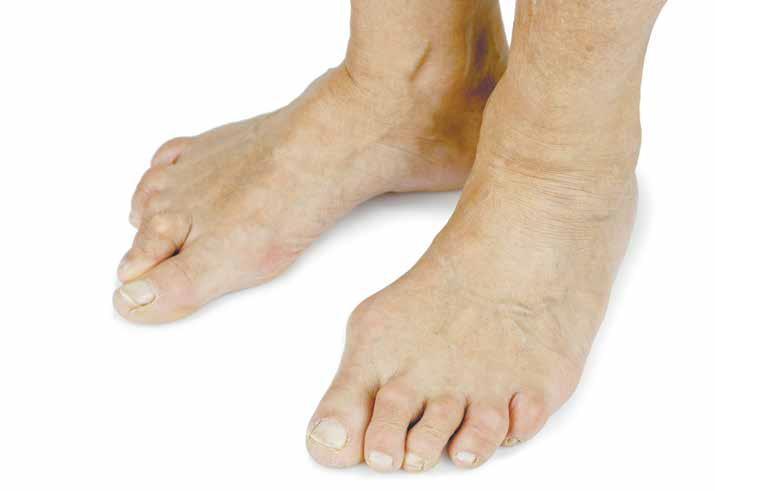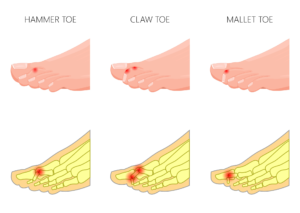
So you’ve developed a hammertoe – or maybe you’ve noticed that your child’s toes are starting to curl. So what can you do about it? Should you do anything about it? What if there’s no pain – is it fine to leave them?
Today, Auckland’s premier podiatry team, Perform Podiatry, talks about the causes and treatment of curly toes.
What are the different kinds of curly toes?
Hammertoes, claw toes and mallet toes are the three most common kinds of ‘curly toes’. These are medically known as clinodactyly, which translates to the ‘curvature of a digit’. The difference between the three lies in which joints the curvature is found and in which direction it is occurring. The lesser toes contain three joints – one at the ball of the foot and two within the toe. Here are the differences between the three conditions:

What causes these changes to the toe shape?
We have muscles and tendons running across the toes and attaching to the joints. When these muscles and tendons pull on the toe (which can happen from various causes), an imbalance occurs and the joint moves, curling the toe upwards or downwards. While these changes may be flexible at first, over time, the joints can become stiff and rigid. The causes of the imbalance may be:
-
- The length of your toes – a common place for a hammertoe is at the second toe, when the second toe is longer than the big toe
- Footwear – wearing tight or narrow shoes where your toes bump against the end of the shoes or are kept in a bent position can cause the toes to curl permanently
- Toe injuries – when your toes or feet are injured, curly toes are more likely to develop
- Poor foot posture or alignment
- Arthritis and other medical conditions – when you have medical conditions that affect the joints, the toes may be more likely to curl
Do curly toes cause pain?
While the changes to the joint shape and position do not typically cause pain, the resulting position of the toes can lead to painful complications. These include corns, callus, blisters, thickened nails or nail damage, metatarsalgia (forefoot pain), and difficulty fitting closed-toe shoes comfortably.
This is a particular risk for those with diabetes or issues with circulation, as they are more likely to develop ulcers from areas of friction on the toes as a result of curled toe shape.
How are curly toes treated?
Curly toes fall into two distinct categories – those that are still flexible and may respond to treatment, and those that are stiff and will not respond to regular care. For those that are stiff, the goal is to keep your feet as comfortable as possible while reducing the risk of the complications we mentioned above. This can be done by wearing shoes with a wide toe box, using devices to offload the toes, and caring for any corns, calluses or other problems that arise.
For curly toes that have recently developed and are still flexible, we have a range of toe props and other devices that can be worn to encourage the toes to straighten. The best device will depend on which toes and joints have been affected.
Is your goal to get back to straight toes and comfortable feet?
Then our experienced podiatrists here at Perform Podiatry are here to help. Book an appointment by calling 09 523 2333 or book online here.

